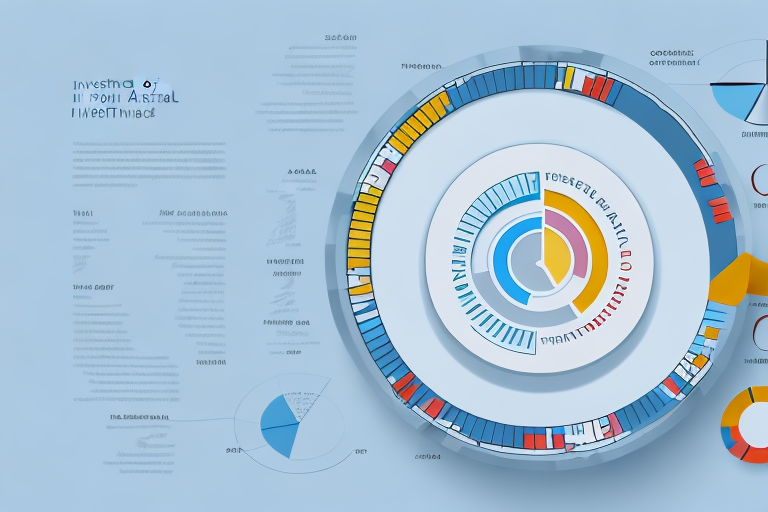Retirement planning can be a complex and challenging task. As people approach their golden years, ensuring financial stability becomes a top priority. One crucial aspect of retirement portfolios is investment diversification, which aims to mitigate risk while maximizing returns. In this article, we will delve into the importance of diversification, explore key principles of portfolio diversification, discuss effective strategies for retirement portfolios, examine the role of alternative investments, and highlight the significance of monitoring and adjusting a diversified portfolio.
Understanding the Importance of Diversification
When it comes to retirement planner, diversification is often touted as one of the most effective risk management tools. The basic principle behind diversification is the belief that not putting all your eggs in one basket can help shield your investments from significant losses. By spreading investments across different asset classes, sectors, and geographic regions, you can reduce the potential impact of any single investment on your overall portfolio.
Diversification is not just a strategy for the risk-averse; it is a fundamental principle that has been proven to enhance investment performance over the long term. By diversifying your portfolio, you are essentially creating a safety net that can help protect your hard-earned money from unexpected market downturns.
The Role of Diversification in Risk Management
A key benefit of diversification is the reduction of risk. By diversifying your retirement portfolio, you can minimize the negative impact of market volatility. For example, if you only hold stocks in a single industry and that particular sector experiences a downturn, your entire portfolio could suffer. But by diversifying across various industries and asset classes, you can potentially offset losses in one area with gains in another, reducing the overall risk exposure of your portfolio.
Furthermore, diversification can also help protect against company-specific risks. If you have a significant portion of your portfolio invested in a single company and that company faces financial difficulties or goes bankrupt, your entire investment could be wiped out. However, by diversifying across multiple companies, you can mitigate the impact of such events and safeguard your retirement savings.
The Impact of Diversification on Long-Term Returns
Diversification not only helps manage risk but also plays a crucial role in maximizing long-term returns. By spreading your investments across different assets, you increase the likelihood of capturing gains from various investment opportunities. Different investments perform differently over time, and by diversifying, you have a better chance of participating in the growth of different sectors and companies.
Moreover, diversification allows you to take advantage of different economic cycles. Some sectors may perform well during periods of economic expansion, while others may thrive during times of recession. By diversifying across sectors, you can position your portfolio to benefit from these cycles and potentially enhance your overall returns.
It is important to note that diversification does not guarantee profits or protect against losses in a declining market. However, it is a prudent strategy that can help mitigate risk and improve the likelihood of achieving your long-term financial goals.

Key Principles of Portfolio Diversification
Effectively diversifying a retirement portfolio involves understanding key principles and implementing them strategically. Two fundamental principles of portfolio diversification are asset allocation and the concept of correlation.
Asset Allocation and Diversification
Asset allocation refers to the decision of how much of your investment portfolio should be allocated to different asset classes such as stocks, bonds, and cash. Proper asset allocation is essential for diversification as it ensures that your investments are not concentrated in a single asset class. By diversifying across asset classes, you can reduce the risk associated with any one particular investment type.
Let’s take a closer look at the different asset classes and their characteristics:
1. Stocks: Stocks represent ownership in a company and are considered riskier than other asset classes. However, they also offer the potential for higher returns. Stocks can be further classified into different categories such as large-cap, mid-cap, and small-cap, each with its own risk and return profile.
2. Bonds: Bonds are debt instruments issued by governments or corporations. They are generally considered less risky than stocks and provide a fixed income stream in the form of interest payments. Bonds can be further categorized based on their credit ratings, maturity dates, and yields.
3. Cash: Cash refers to liquid assets such as savings accounts, money market funds, and certificates of deposit. While cash is the least risky asset class, it also offers the lowest potential returns.
By diversifying your portfolio across these asset classes, you can potentially benefit from the different risk and return characteristics of each class. This helps to reduce the overall volatility of your portfolio and provides a more balanced investment approach.
The Concept of Correlation in Diversification
Correlation measures the relationship between different investments. Investments that have a high positive correlation tend to move in the same direction, while investments with a negative correlation move in opposite directions. By diversifying across assets with low or negative correlations, you can potentially reduce the overall volatility of your portfolio. This is because gains in one investment may offset losses in another, leading to a more stable overall return.
Let’s explore some examples of correlation between different asset classes:
1. Stocks and Bonds: Historically, stocks and bonds have had a negative correlation. This means that when stock prices go up, bond prices tend to go down, and vice versa. By including both stocks and bonds in your portfolio, you can potentially benefit from this negative correlation and reduce the overall risk.
2. International and Domestic Investments: Investing in international markets can provide diversification benefits as they often have a lower correlation with domestic investments. By including international stocks or bonds in your portfolio, you can potentially reduce the risk associated with any one country’s economy or market performance.
3. Real Estate and Stocks: Real estate investments have historically shown a low correlation with stocks. Including real estate investment trusts (REITs) or other real estate assets in your portfolio can help diversify your investments and potentially reduce overall portfolio volatility.
Understanding the concept of correlation and its implications for diversification is crucial for building a well-balanced portfolio. By strategically diversifying across assets with different correlations, you can potentially enhance the risk-return profile of your investments.
Diversification Strategies for Retirement Portfolios
Planning for retirement involves making smart investment decisions to ensure financial security in the future. One crucial aspect of retirement portfolio management is diversification. By diversifying your investments, you can minimize risk and potentially maximize returns. Let’s explore two common diversification strategies that can be implemented in retirement portfolios: diversifying across asset classes and geographic diversification.
Diversifying Across Asset Classes
When it comes to diversification, one of the most effective strategies is to allocate investments across different asset classes. Asset classes are categories of investments that have similar characteristics and behaviors. The most common asset classes include stocks, bonds, and cash.
By diversifying across asset classes, you ensure that your retirement portfolio is not overly reliant on the performance of a single asset class. For example, if you have a portfolio heavily weighted in stocks and the stock market experiences a downturn, your entire retirement savings could be at risk. However, by diversifying across asset classes, you spread your investments across different types of assets, which can help mitigate the impact of market volatility.
Each asset class has its own risk and return characteristics. Stocks, for instance, tend to offer higher potential returns but also come with higher volatility. Bonds, on the other hand, are generally considered less risky but offer lower returns. Cash investments, such as savings accounts or money market funds, provide stability but may not generate significant growth over time.
By diversifying across asset classes, you can potentially lower the overall risk of your investments and increase the likelihood of generating steady returns. This strategy allows you to benefit from the strengths of different asset classes while minimizing the impact of their weaknesses.
Geographic Diversification in Retirement Portfolios
Another important aspect of diversification is geographic diversification. This strategy involves investing in assets from different countries and regions around the world. By spreading your investments across multiple geographic areas, you can reduce the impact of country-specific risks and take advantage of growth opportunities in different markets.
Every country has its own economic, political, and regulatory factors that can influence the performance of investments. By diversifying geographically, you protect your retirement portfolio from the effects of economic downturns in any one particular country or region. For example, if you have a significant portion of your investments in a single country and that country experiences a recession, your portfolio could suffer significant losses. However, by diversifying across different countries and regions, you can potentially mitigate the impact of such events.
Geographic diversification also allows you to tap into the potential growth of emerging markets. Developing countries often offer higher growth rates compared to more mature economies. By investing in these markets, you can potentially benefit from their economic expansion and diversify your sources of returns.
It is important to note that diversification does not guarantee profits or protect against losses. However, by implementing diversification strategies such as diversifying across asset classes and geographic diversification, you can potentially reduce risk and increase the likelihood of achieving your retirement goals.
The Role of Alternative Investments in Diversification
Alternative investments can serve as an additional diversification tool in retirement portfolios. Two popular alternative investments for diversification are real estate and commodities.
Real Estate and Diversification
Real estate can provide diversification benefits due to its low correlation with traditional asset classes. Adding real estate to a retirement portfolio can reduce overall portfolio volatility and potentially enhance returns. Real estate investments can be made through publicly traded real estate investment trusts (REITs) or by directly owning properties.
Commodities as a Diversification Tool
Investing in commodities, such as gold, oil, or agricultural products, can provide diversification benefits as their performance is generally uncorrelated with traditional stock and bond markets. Commodities can act as a hedge against inflation and provide portfolio stability during periods of market uncertainty.
Monitoring and Adjusting Your Diversified Portfolio
Once a diversified retirement portfolio has been established, it is crucial to regularly monitor and adjust it to ensure optimal diversification. This involves conducting regular portfolio reviews and rebalancing as necessary.
The Importance of Regular Portfolio Reviews
Regular portfolio reviews allow investors to assess the performance of individual investments within their retirement portfolios and the overall asset allocation. By reviewing the portfolio periodically, investors can ensure that their investments align with their long-term goals and make any necessary adjustments based on changing market conditions or personal circumstances.
Rebalancing Your Portfolio for Optimal Diversification
Rebalancing involves readjusting the asset allocation of a portfolio to maintain the desired diversification. Over time, the performance of different investments may cause the portfolio to deviate from its original allocation. By rebalancing, investors can bring their portfolio back in line with their target asset allocation, ensuring that the benefits of diversification are preserved.
Conclusion
Investment diversification is a critical component of retirement portfolios. By understanding its importance, implementing key principles of diversification, and utilizing effective strategies such as asset allocation, geographic diversification, and alternative investments, individuals can build well-diversified portfolios that maximize long-term returns while minimizing risk. Regular portfolio reviews and rebalancing are essential for maintaining optimal diversification and ensuring that retirement portfolios remain aligned with financial goals. By prioritizing diversification, investors can enhance their chances of achieving a secure and prosperous retirement.
